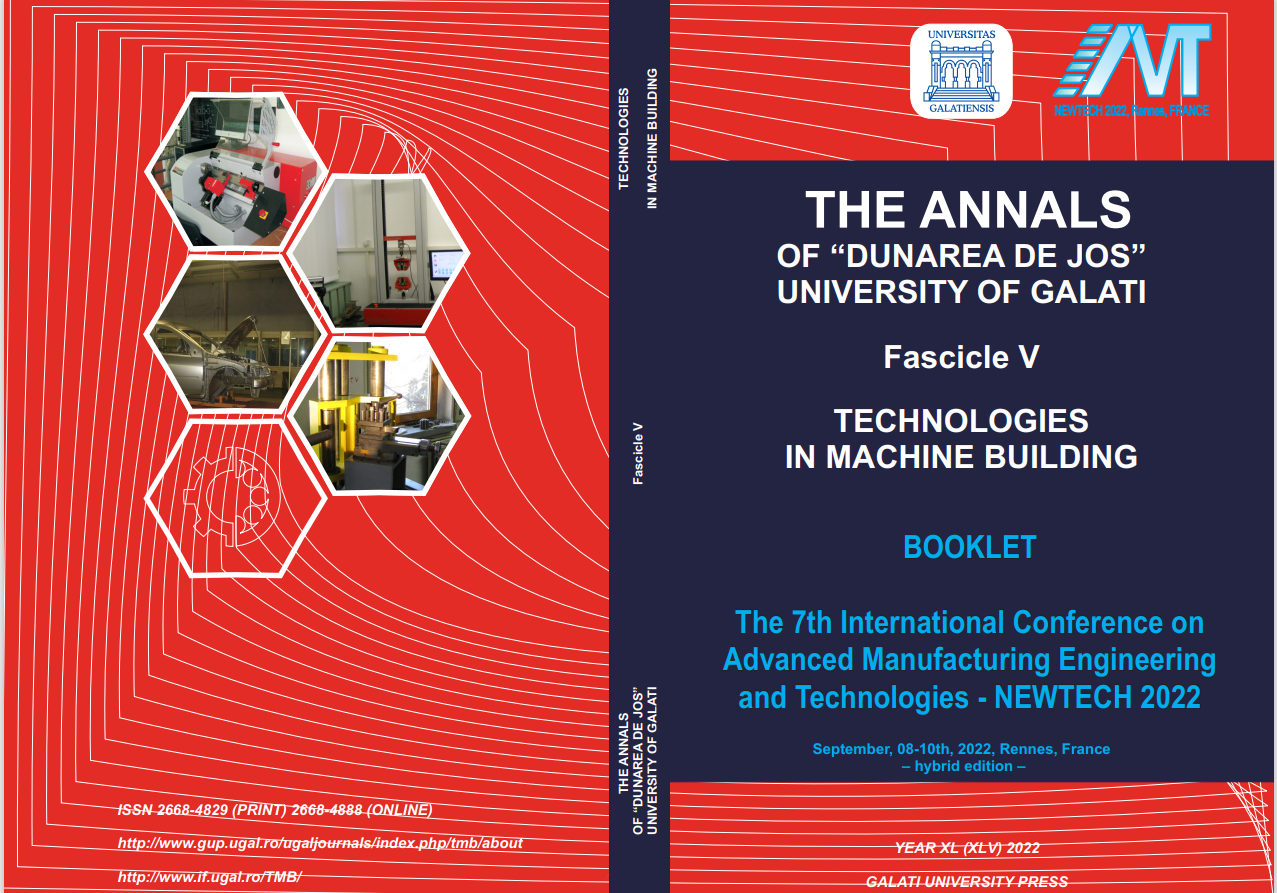Optimization of Manufacturing Processes by Reducing the Costs of Tools and Equipment on Hydraulically Operated High-Pressure Technological Lines
Abstract
Most technological manufacturing lines include hydraulically operated stationary tools,
devices and equipment. During a manufacturing cycle, there are phases, usually short, in which part of
the hydraulic cylinders of the drive systems concerned, with small gauges and displacement speeds,
have to generate / maintain high clamping or pressing forces, which implies functioning at high
working pressures. The solution for such cylinders is to use modular hydraulic pumping units
comprising: oil tank; low-pressure electric pump; hydraulic directional valve for starting, stopping and
changing the direction of movement of the cylinder; electric pump pressure control valve; pressure
filter; return filter; oscillating hydraulic pressure intensifier (minibooster mounted directly on the
cylinder). Such pumping modules, which consume low pressure (in the primary side of the
minibooster) to generate high pressures (in the secondary side of the minibooster), are cost-effective
when it comes to the purchase of components, in-stalling them, the space required for installation, and
their maintenance, too. The classic applications of using them are for achieving and maintaining high
pressure values, either in volumes of closed spaces (endurance tests for pipes and tanks), or at the
active stroke end of hydraulic cylinders (hydraulic presses).
The authors demonstrate, on an experimental laboratory bench, the following:
- The range of applications of such pumping modules can be extended in a third direction, namely for
actuation of hydraulic cylinders with low gauge / speeds and constant high load (high working
pressure) over the entire stroke;
- Uniformity of movement of these cylinders with load over the entire stroke that are fed and operated
by such pumping modules is weakly affected by the pulsating operating mode of the hydraulic
pressure intensifier.


